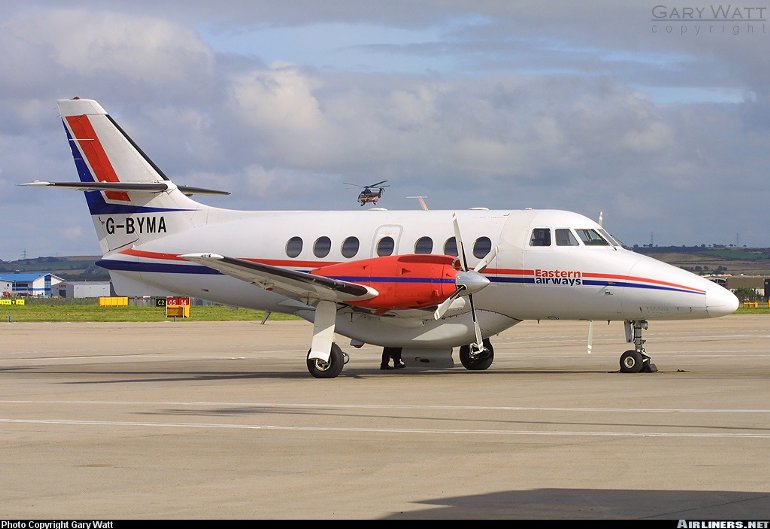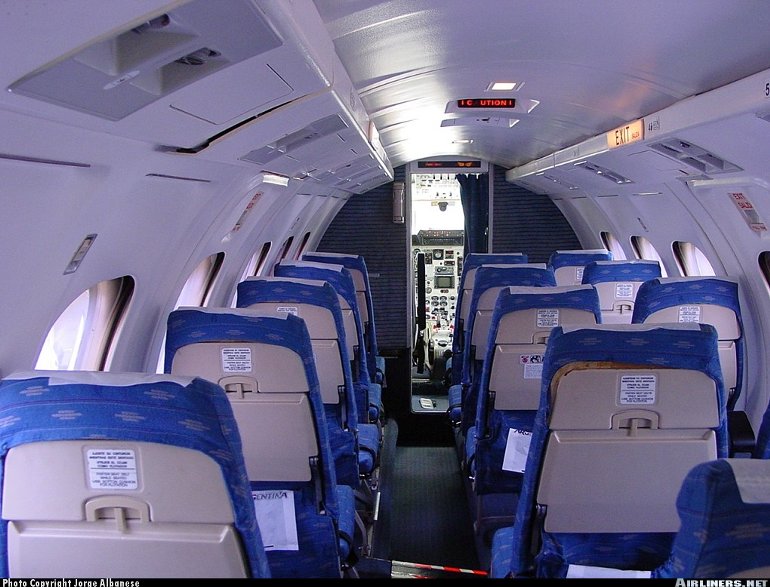Aircraft Technical Data
British Aerospace Jetstream 31/Super 31



| Details | |
| Country of Origin | United Kingdom |
| Type | 19 seat regional airliner |
| History | The successful Jetstream 31 traces its ancestry to the Turboméca Astazou powered Handley Page HP-137 Jetstream 1. The HP-137 was designed as early ago as 1965, and flew for the first time on August 18 1967. Initial Handley Page production aircraft were powered by 635kW (850hp) Astazou XIVs and named Jetstream 1 (36 built), but deliveries were delayed by excess weight and drag problems. To overcome these problems Handley Page developed the Jetstream 2 with more powerful 800kW (1073shp) Astazou XIVCs. However Handley Page ran into serious financial difficulties in the late 1960s (causing the US Air Force to cancel an order for 10 Garrett TPE331 powered C-10A Jetstreams [3Ms]) and it folded in 1969, bringing to an end development of the more powerful Jetstream 2 and plans to market a civil version of the 3M in the USA. A few unfinished aircraft were completed by Terravia, and development of the Jetstream 2 resumed in 1970 as the Jetstream 200 under the control of the newly formed Jetstream Aircraft in collaboration with Scottish Aviation. Scottish Aviation later assumed overall responsibility for the Jetstream and built a number as navigation and multi-engine trainers for Britain's military services as the Jetstream T1 and T2. Development continued after Scottish Aviation was merged into British Aerospace in 1977, and work on the Jetstream 31 (or J31) began in 1978. The first flight of the Garrett TPE331 powered Jetstream 31 (a converted HP-137) occurred on March 28 1980. The first production aircraft flew in March 1982, UK certification was granted in June 1982. In British Naval service the J31 is designated the Jetstream T3. Subsequent development led to the Super 31, certificated in October 1988. The Super 31 (or unofficially J32) features uprated engines, higher weights and better performance. The last J31/J32 was built in 1993. Since 1997 British Aerospace Asset Management has been offering for sale or lease the upgraded J32EP (Enhanced Performance). Its minor aerodynamic and drag improvements enhance payload range and hot and high performance. |
| Powerplants | J31 - Two 700kW (940shp) Garret TPE331-10 turboprops driving four blade constant speed propellers. Super 31 - Two 760kW (1020shp) TPE331-12UARs |
| Performance | J31 - Max cruising speed 482km/h (260kt), long range cruising speed 426km/h (230kt). Initial rate of climb 2200ft/min. Range with 19 pax and reserves 1185km (640nm), 1760km (950nm) with 12 pax or 2130km (1150nm) with nine pax. Super 31 - Max cruising speed 490km/h (264kt), long range cruising speed 452km/h (244kt). Initial rate of climb 2240ft/min. Range with 19 pax and reserves 1192km (643nm). |
| Weights | J31 - Operating empty 4360kg (9613lb), max takeoff 6950kg (15,322lb). Super 31 - Operating empty 4578kg (10,992lb), max takeoff 7350kg (16,204lb). |
| Dimensions | Wing span 15.85m (52ft 0in), length 14.37m (47ft 2in), height 5.37m (17ft 6in). Wing area 25.1m2 (270sq ft) |
| Capacity | Flightcrew of two. Main cabin seating for up to 19 at three abreast and 79cm (31in) pitch, or 12 passengers in a corporate shuttle configuration, or nine in an executive layout |
| Production | Total J31 deliveries of 381, including 161 Super J31s. |
| Related Links | British Aerospace Jetstream 31/Super 31 |
The backbone of this section is from the The International Directory of Civil Aircraft by Gerard Frawley and used with permission. To get your own copy of the book click here |
|








